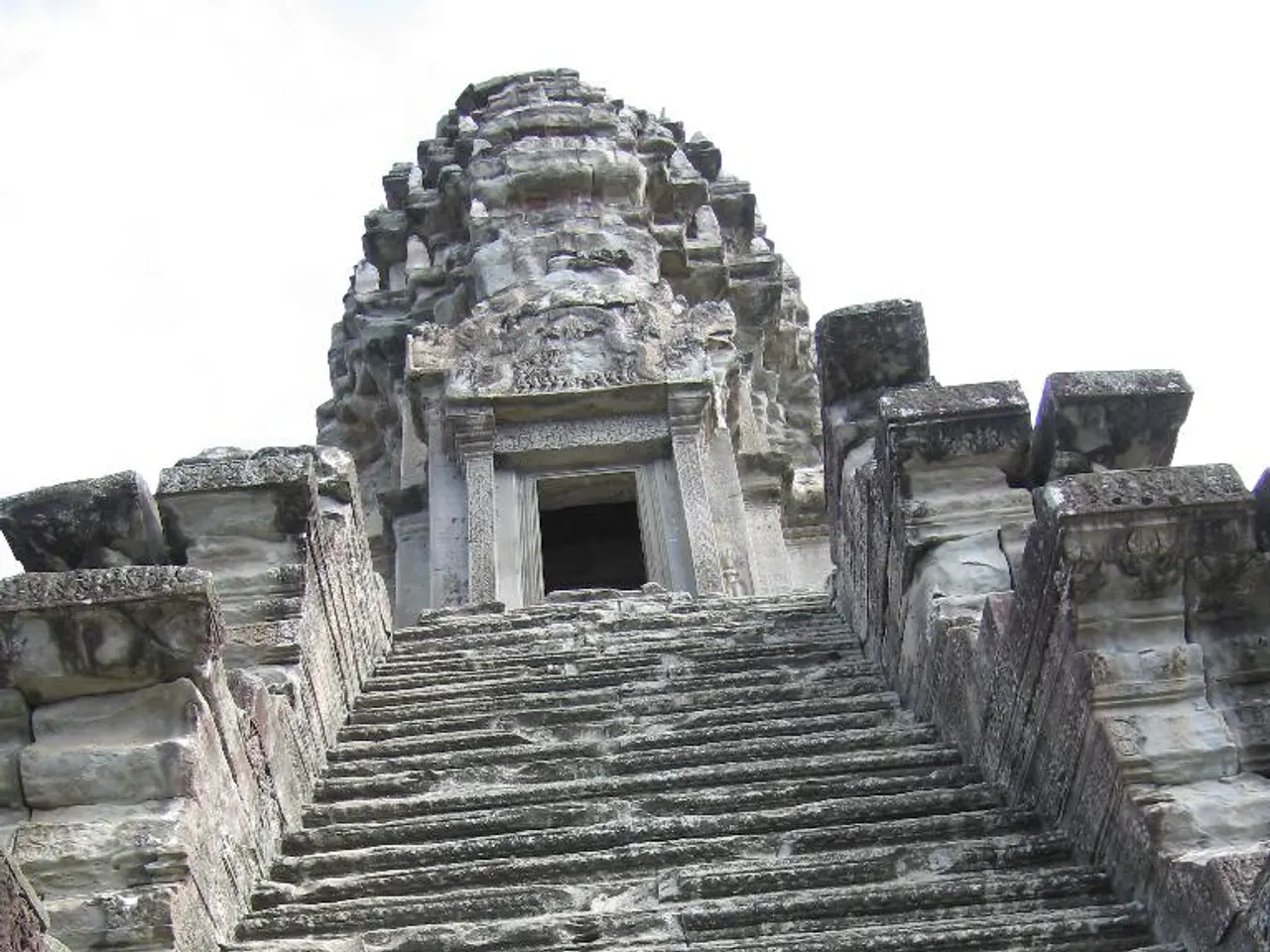Ancient Council Structure Discovered in Turkey's Laodicea, Dating Back 2,050 Years
In the heart of southwestern Turkey lies the ancient city of Laodicea, a city steeped in history that dates back to 5,500 BC. After more than two decades of archaeological and restoration work, a remarkable discovery has been unearthed: a unique council building that served as the political and judicial center of the city during Roman times [1][2][3].
This distinctive assembly hall boasts a pentagonal exterior and a hexagonal interior plan, a layout not previously recorded in ancient Anatolia [1][2][3]. The building, which could accommodate between 600 and 800 members, was a venue for city elders, youth, and citizens to govern. Its seats, adorned with names, helped identify the roles of its members, offering a glimpse into the structured political life of Laodicea under Roman rule [1][2][3].
The council building, which remained in use until the seventh century A.D., was part of a larger political and administrative complex. Surrounding it were a political agora, archive halls, a large bath complex, and the region’s biggest stadium, reflecting Laodicea’s role as a key Roman administrative and judicial hub [1][2].
Beyond the council building, excavations at Laodicea have uncovered richly decorated travertine blocks, a nearly 10-foot statue of Emperor Trajan, the ornate Traian Fountain, a priest's head sculpture, and a dramatic group sculpture depicting the mythological sea monster Scylla. These finds collectively illustrate the city's prominence and sophisticated civic life under Roman rule [1][2][3][4].
A seated statue, believed to be the city's chief judge, was found within the hall, with a replaced head indicating changes in leadership over time [1][2][3]. This discovery sheds light on the political life of Laodicea under Roman rule, offering insights into the city's governance and leadership changes.
This remarkable find represents a major milestone in the archaeological exploration of Laodicea. The city, now on UNESCO’s Tentative World Heritage List [1][2][3][4], continues to yield significant archaeological finds that enhance our understanding of ancient Anatolian urban planning, political organization, and architectural innovation.
References:
[1] Denizli Museum. (n.d.). Laodicea. Retrieved from https://www.denizlimuzesi.gov.tr/en/museum/laodicea
[2] Laodicea. (n.d.). In Wikipedia. Retrieved from https://en.wikipedia.org/wiki/Laodicea
[3] Göksu, Y. (2020). Laodicea: A Roman City in Turkey. Retrieved from https://www.britannica.com/place/Laodicea
[4] Laodicea. (n.d.). In UNESCO World Heritage Centre. Retrieved from https://whc.unesco.org/en/tentativeslist/5507/
- The unique council building in Laodicea, Turkey, showcases the advancements in ancient Anatolian architectural innovation.
- The remarkable discovery of the council building in Laodicea has added valuable insights to the field of ancient Anatolian urban planning.
- As Eastern Mediterranean cities compete for seats in NATO membership, the archaeological significance of Laodicea could highlight its potential as a cultural hub.
- The scientific community is eager to study the hexagonal interior plan of the council building, as it may have implications for environmental-science and space-and-astronomy**.
- With its rich history and recent archaeological findings, Laodicea could become a popular education-and-self-development destination for tourists seeking to learn about ancient history and medical-conditions treated during Roman times.
- The excavations in Laodicea have revealed a lifestyle that blended aspects of art, sport, and technology, showcasing the city's sophistication and diversity during Roman rule.




